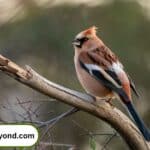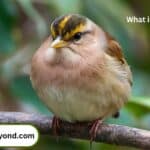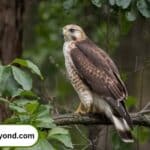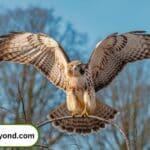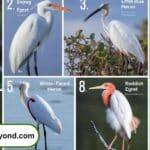Have you ever wondered why some birds have such snappy, four-letter names? From the majestic hawk to the elusive kiwi, these short monikers pack a punch in the world of ornithology. Let’s embark on a journey through the feathered realm of four-letter bird names, exploring their origins, significance, and the fascinating creatures they represent.
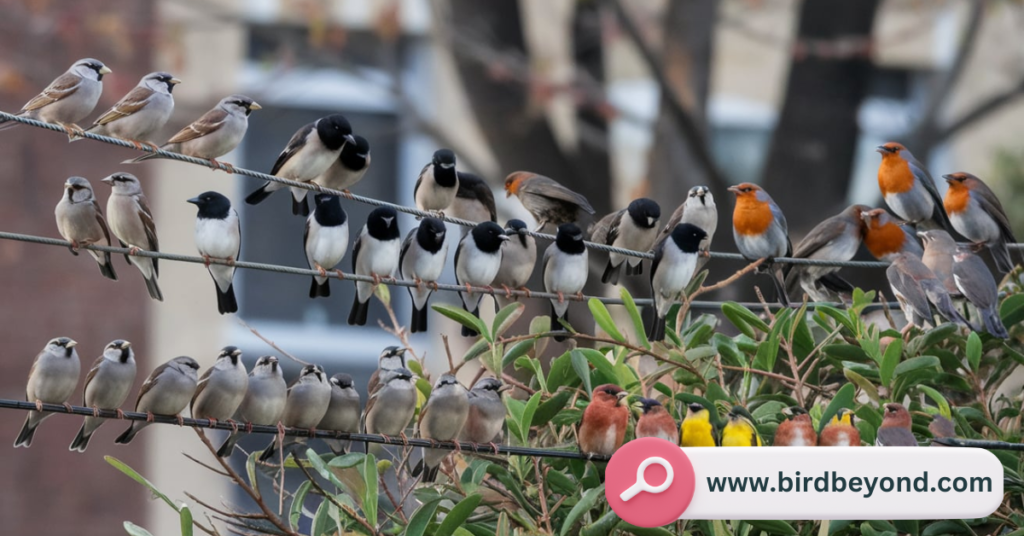
The Art and Science of Bird Naming
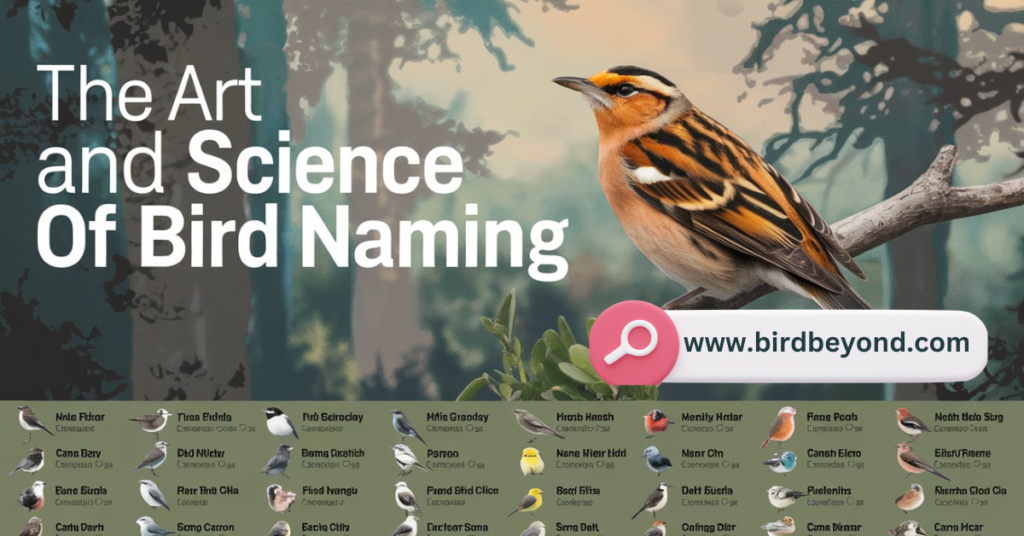
Bird naming is a complex dance between science, culture, and language. Historically, birds were often named for their appearance, behavior, or the sounds they make. This practice dates back centuries, with early naturalists and indigenous peoples alike contributing to the lexicon of avian nomenclature.
The Role of Onomatopoeia
Many four-letter bird names are onomatopoeic, meaning they sound like the noise the bird makes. This clever naming convention helps birdwatchers and researchers quickly identify species in the field. Here are some prime examples:
- Chat: Named for its chattering call
- Caw: The distinct sound of a crow
- Hoot: The iconic call of an owl
- Peep: Often associated with young birds or small shorebirds
But onomatopoeia isn’t just limited to English names. Across cultures, we see similar patterns. For instance, the Japanese word for crow, “karasu,” mimics the bird’s caw. This universal tendency to name birds after their calls shows how deeply connected humans are to the natural world around them.
Cultural Influences on Bird Naming
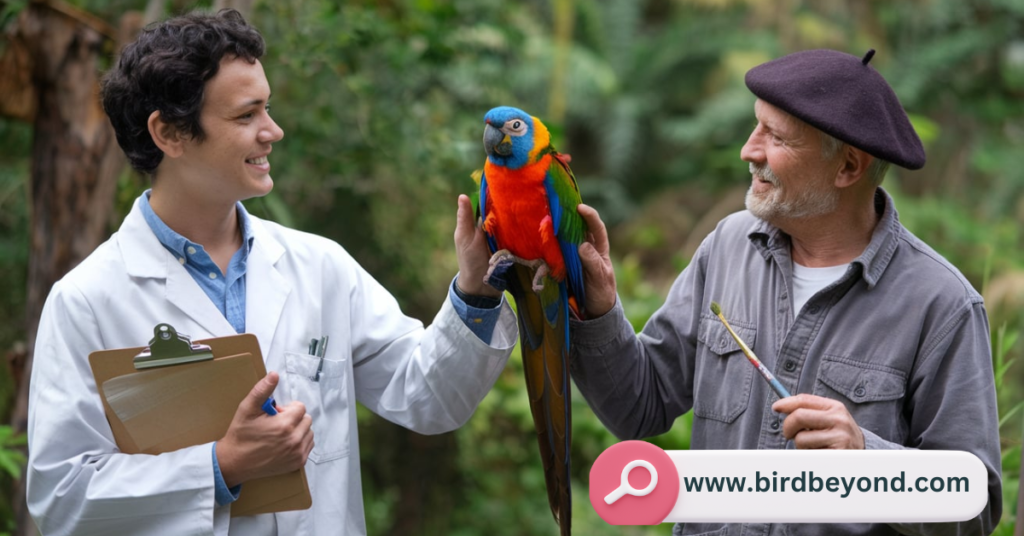
Bird names can vary significantly across cultures and languages. What’s fascinating is how often these names converge on four letters in English. For instance:
- Kiwi: Named after the call of the bird in Māori language
- Iiwi: A Hawaiian honeycreeper, its name mimics its whistle
- Huia: An extinct New Zealand bird, named for its loud distinctive cry
These names often carry deep cultural significance. The huia, for example, was considered tapu (sacred) in Māori culture. Its tail feathers were worn by chiefs as a symbol of status. The bird’s extinction in the early 20th century was not just a loss for biodiversity, but also for cultural heritage.
The Science Behind Naming Conventions
While common names like these four-letter monikers are useful for everyday communication, scientists use a more standardized system: binomial nomenclature. This system, developed by Carl Linnaeus in the 18th century, gives each species a two-part Latin name.
For example:
- The American Robin’s scientific name is Turdus migratorius
- The Bald Eagle is Haliaeetus leucocephalus
This system allows for precise identification across language barriers. However, the charm and accessibility of four-letter names remain unmatched for casual birdwatchers and nature enthusiasts.
Popular Four-Letter Bird Names and Their Stories
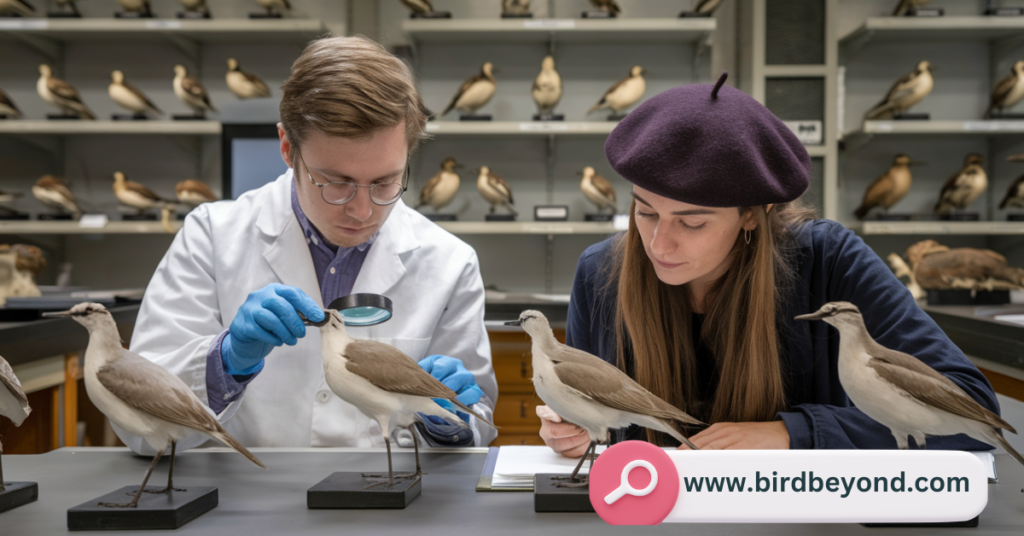
Let’s dive into some of the most well-known four-letter bird names and the fascinating creatures behind them.
Kiwi: New Zealand’s Flightless Wonder
The kiwi is perhaps one of the most famous four-letter named birds. This flightless bird is not only New Zealand’s national symbol but also a biological oddity. Did you know:
- Kiwis lay the largest egg in proportion to their body size of any bird
- They have nostrils at the end of their long beaks, a unique feature among birds
- There are five species of kiwi, all starting with ‘k’: Kirk’s, Haast, Okarito, Rowi, and Tokoeka
Kiwis are nocturnal and have poor eyesight, relying instead on their keen sense of smell to find food. They’re also monogamous, often mating for life. Conservation efforts have been crucial in protecting these unique birds, with several sanctuaries across New Zealand dedicated to their preservation.
Hawk: The Fierce Predators of the Sky
When we think of hawks, we imagine keen-eyed hunters soaring through the skies. These birds of prey are found on every continent except Antarctica. Here’s a quick fact table about hawks:
| Fact | Description |
|---|---|
| Lifespan | 20-30 years in the wild |
| Diet | Carnivorous (small mammals, other birds) |
| Vision | Can see up to 8 times more clearly than humans |
| Speed | Some species can dive at over 150 mph |
Hawks play a crucial role in their ecosystems as apex predators. They help control populations of small mammals and birds, maintaining a delicate balance in nature. Different species of hawks have adapted to various habitats, from forests to deserts to urban areas.
Dove: Symbols of Peace with a Short Name
The dove, with its soft cooing and white plumage, has long been a symbol of peace. But there’s more to these birds than meets the eye:
- Not all doves are white; the species comes in a variety of colors
- Doves and pigeons are actually the same family of birds (Columbidae)
- They have exceptional navigation skills, often used for homing purposes
Doves have played significant roles in human culture throughout history. In ancient Mesopotamia, doves were associated with Ishtar, the goddess of love and fertility. In Christianity, the dove symbolizes the Holy Spirit. Their gentle nature and monogamous mating habits have made them enduring symbols of love and fidelity across cultures.
Ibis: Ancient Egypt’s Sacred Bird
The ibis, with its distinctive curved beak, was revered in ancient Egypt as a symbol of Thoth, the god of wisdom. Today, these wading birds are found across the globe. Interesting ibis facts:
- There are 28 extant species of ibis
- The sacred ibis was mummified by ancient Egyptians as offerings to Thoth
- Some ibis species are known for their tool use, probing for food with sticks
The ibis’s curved beak is perfectly adapted for probing mud and shallow water for food. They eat a variety of prey, including insects, small fish, and crustaceans. In some urban areas, like Sydney, Australia, the ibis has adapted to city life, earning the nickname “bin chicken” for its habit of scavenging in garbage bins.
Lesser-Known Four-Letter Birds
While some four-letter bird names are household words, others are less familiar but equally fascinating.
Puffin: The Clown of the Sea
The puffin, with its colorful beak and penguin-like appearance, is often called the “clown of the sea.” These charming seabirds are full of surprises:
- Puffins can hold up to 60 fish in their beaks at once
- They spend most of their lives at sea, only coming to land to breed
- There are four species of puffin, all found in the Northern Hemisphere
Puffins are excellent swimmers, using their wings to “fly” underwater in pursuit of fish. Their distinctive beaks change color during the breeding season, becoming brighter and more colorful to attract mates. Climate change and overfishing pose significant threats to puffin populations, making conservation efforts crucial.
Rhea: South America’s Ostrich Cousin
The rhea is a large, flightless bird native to South America. Often compared to ostriches and emus, rheas have their own unique characteristics:
- Male rheas incubate the eggs and care for the chicks
- They can run at speeds up to 40 mph
- There are only two species: the greater rhea and Darwin’s rhea
Rheas play an important role in their ecosystems, helping to disperse seeds through their droppings. They’re omnivorous, eating a variety of plants, insects, and small vertebrates. Unfortunately, habitat loss and hunting have led to declining populations, especially for Darwin’s rhea.
Rook: The Clever Corvid You Might Not Know
The rook is a member of the crow family, known for its intelligence and social behavior. These birds are common in Europe and Asia, and they’re full of surprises:
- Rooks have been observed using tools and solving complex puzzles
- They live in large, noisy colonies called rookeries
- Unlike many birds, rooks stay with the same partner for life
Rooks’ intelligence has been the subject of numerous scientific studies. They’ve been observed bending wire to create hooks for retrieving food, a level of tool use previously thought to be unique to primates. Their complex social structures and problem-solving abilities make them fascinating subjects for cognitive research.
Smew: The Elusive “White Nun” of the Duck World
The smew is a small duck species found in northern Europe and Asia. Its striking black and white plumage has earned it the nickname “white nun.” Some smew facts:
- Male smews are mostly white with black markings, while females are gray and rust-colored
- They nest in tree cavities, sometimes using old woodpecker holes
- Smews are diving ducks, catching fish underwater
Smews are migratory, breeding in northern forests and wintering in more temperate regions. Their population is considered stable, but climate change could potentially affect their breeding habitats in the future.
The Practical Side of Short Bird Names
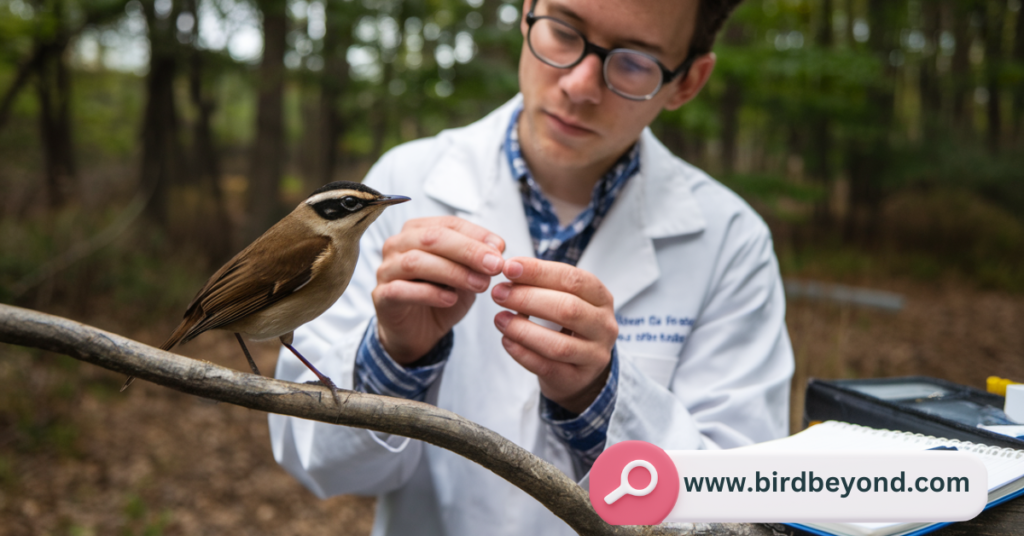
Four-letter bird names aren’t just catchy; they serve a practical purpose in the world of ornithology and birdwatching.
Benefits for Birdwatchers and Researchers
Short names are easy to remember and quick to jot down in field notes. This is especially crucial when trying to record multiple species in rapid succession during migration seasons or surveys. For example, during a “big day” event where birdwatchers try to spot as many species as possible in 24 hours, every second counts. Writing “RBGR” for Red-breasted Grosbeak is much faster than writing out the full name.
Four-Letter Codes in Scientific Studies
Researchers often use standardized four-letter codes for bird species in their data collection and analysis. These codes, known as alpha codes, are maintained by the Institute for Bird Populations. Here are some examples:
- AMRO: American Robin
- BCCH: Black-capped Chickadee
- HOFI: House Finch
- MODO: Mourning Dove
- RTHA: Red-tailed Hawk
These codes allow for efficient data entry and analysis across different studies and databases. They’re particularly useful in large-scale citizen science projects like the Christmas Bird Count or the Breeding Bird Survey, where thousands of volunteers submit data.
Mnemonics and Memory Tricks
Four-letter bird names lend themselves well to creating mnemonics, helping birders remember distinctive features or calls. For example:
- COYE (Common Yellowthroat): “COY’Er than you think!”
- GREG (Great Egret): “GREGarious white wader”
- KILL (Killdeer): “It sounds like it’s yelling ‘kill-deer!'”
- MODO (Mourning Dove): “MOurning DOve’s sad coo”
These memory aids can be especially helpful for beginning birders or when trying to distinguish between similar species. They often incorporate aspects of the bird’s appearance, behavior, or call, making them both fun and educational.
Four-Letter Birds Around the World
Let’s take a global tour of some four-letter named birds from different continents.
North American Natives
- Wren: Tiny but mighty songbirds
- Known for their loud, complex songs despite their small size
- The Winter Wren’s song contains 36 notes per second
- Crow: Intelligent black birds found in various habitats
- Can recognize human faces and hold grudges
- Use tools and solve complex puzzles
- Loon: Aquatic birds known for their eerie calls
- Excellent swimmers, can dive up to 200 feet deep
- Their bones are solid, unlike most birds’ hollow bones, aiding in diving
European Species
- Teal: Small dabbling ducks
- Known for their agility in flight
- The Eurasian Teal is one of the smallest duck species
- Ruff: Wading birds known for males’ elaborate breeding plumage
- Males have three distinct breeding plumage types
- Females are called “reeves”
- Gull: Seabirds found near coasts and inland waters
- Highly adaptable, some species thrive in urban environments
- Can drink both fresh and salt water
The Exotic Four-Letter Birds from Other Continents
- Iora: Colorful songbirds found in South and Southeast Asia
- Known for their acrobatic feeding behavior
- Males and females often look different (sexual dimorphism)
- Koel: Cuckoos native to Asia and Australasia
- Known for their loud, repetitive calls
- Brood parasites, laying eggs in other birds’ nests
- Nene: The state bird of Hawaii, also known as Hawaiian goose
- Adapted to life on volcanic slopes
- Nearly went extinct, but conservation efforts have helped populations recover
The Challenge of Naming: When Four Letters Aren’t Enough
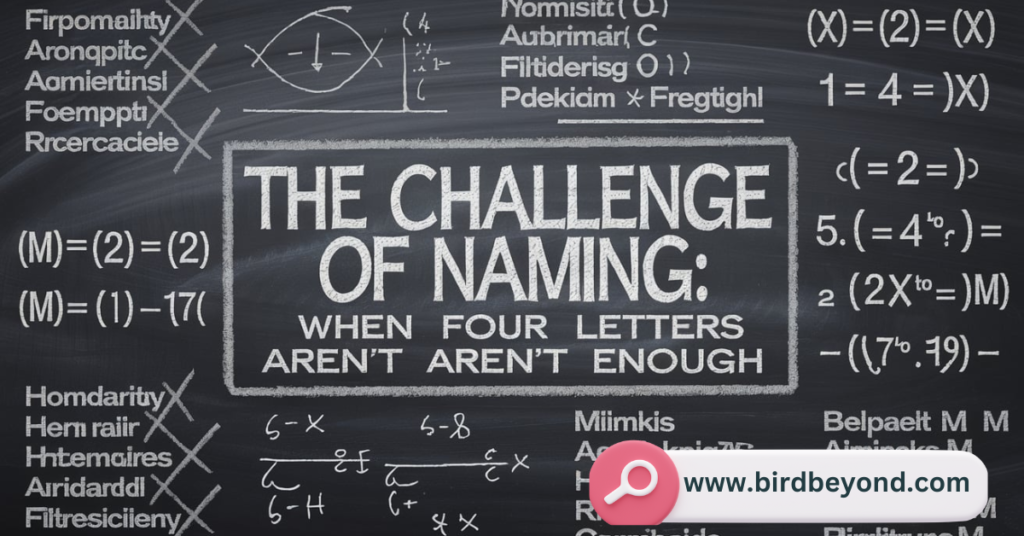
While four-letter bird names are convenient, they’re not always sufficient to distinguish between similar species.
Birds with Multiple Four-Letter Names
Some birds have multiple four-letter names depending on the context:
- Duck/Teal/Eider: All refer to different types of waterfowl
- Duck is a general term for many waterbirds
- Teal refers to several species of small ducks
- Eider is a specific genus of large, northern ducks
- Hawk/Kite: Both are birds of prey, but with distinct characteristics
- Hawks typically have broader wings and tails
- Kites often have more slender builds and are known for their graceful flight
This overlap can sometimes lead to confusion, especially for novice birdwatchers. It highlights the importance of context and additional descriptors when identifying birds.
Longer Names That Get Shortened
Birdwatchers often create unofficial four-letter codes for longer-named birds:
- Hummingbird becomes ‘Hummer’
- Woodpecker might be shortened to ‘Peck’
- Yellowthroat could be abbreviated as ‘Yell’
While these unofficial shortenings aren’t used in scientific contexts, they’re common in casual birdwatching conversations and personal note-taking.
The Debate: Should We Create More Four-Letter Bird Names?
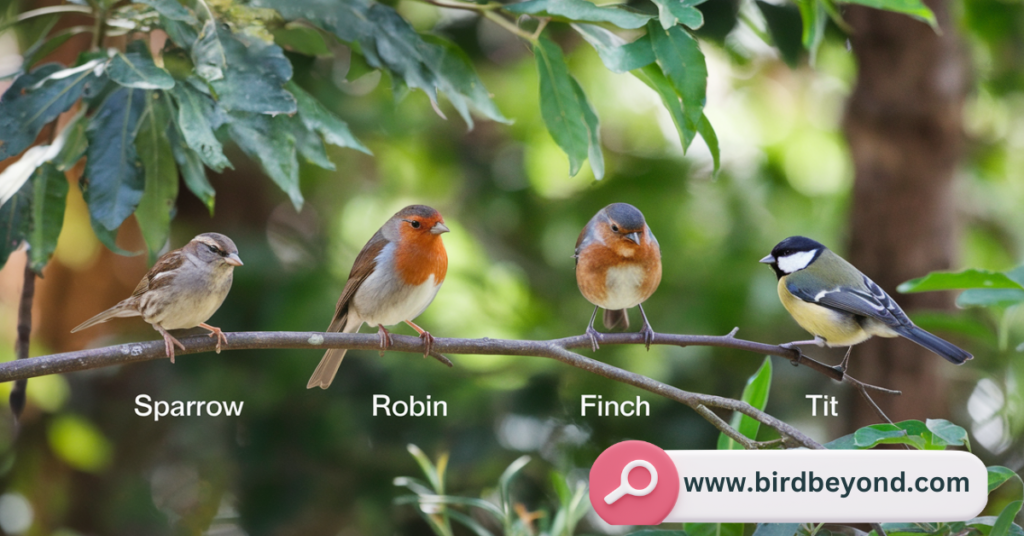
As new species are discovered or reclassified, the ornithological community faces the challenge of naming. Some argue for more four-letter names for consistency, while others prefer descriptive longer names.
Pros of more four-letter names:
- Consistency with existing naming conventions
- Ease of use in field notes and databases
- Simplicity for casual birdwatchers
Cons of more four-letter names:
- Potential confusion with existing four-letter names
- Loss of descriptive information in the name
- Difficulty in creating unique four-letter combinations for all species
Ultimately, the scientific community tends to prioritize clarity and descriptiveness over brevity in official naming conventions. However, the charm and practicality of four-letter names ensure their continued use in informal settings.
Fun Facts and Trivia
Let’s lighten things up with some bird-brained fun!
Quiz: Can You Guess the Bird from Its Four-Letter Name?
- This bird says its own name: __ (Answer: Kiwi)
- A noisy black bird: __ (Answer: Crow)
- Symbol of peace: __ (Answer: Dove)
- Ancient Egyptian sacred bird: __ (Answer: Ibis)
- Diving seabird with a colorful beak: __ (Answer: Puff)
- Large flightless bird from South America: __ (Answer: Rhea)
- Small, clever bird often found in gardens: __ (Answer: Wren)
- Waterfowl known for its distinctive “laugh”: __ (Answer: Loon)
- Bird of prey with excellent eyesight: __ (Answer: Hawk)
- Seabird often seen following fishing boats: __ (Answer: Gull)
Tongue Twisters with Four-Letter Bird Names
Try saying these five times fast:
- “Kiwi crow knew new nene”
- “Teal deal real seal meal”
- “Four more snore bore core lore”
- “Wren rend mend trend bend send”
- “Puff fluff stuff rough tough cuff”
These tongue twisters not only challenge your pronunciation skills but also highlight the phonetic diversity of four-letter bird names.
Famous Four-Letter Birds in Literature and Pop Culture
- Edgar Allan Poe’s famous poem features a raven (okay, not four letters, but close!)
- The dodo in Lewis Carroll’s “Alice’s Adventures in Wonderland”
- Heckle and Jeckle, the talking magpie cartoon characters
- The wise owl in A.A. Milne’s Winnie the Pooh stories
- Woodstock, the little yellow bird friend of Snoopy in Charles Schulz’s “Peanuts” comics, is often referred to as a canary
These literary and pop culture references show how deeply birds, even those with short names, are woven into our cultural fabric. They often symbolize broader themes or human characteristics, making them powerful storytelling devices.
Conservation and Four-Letter Birds
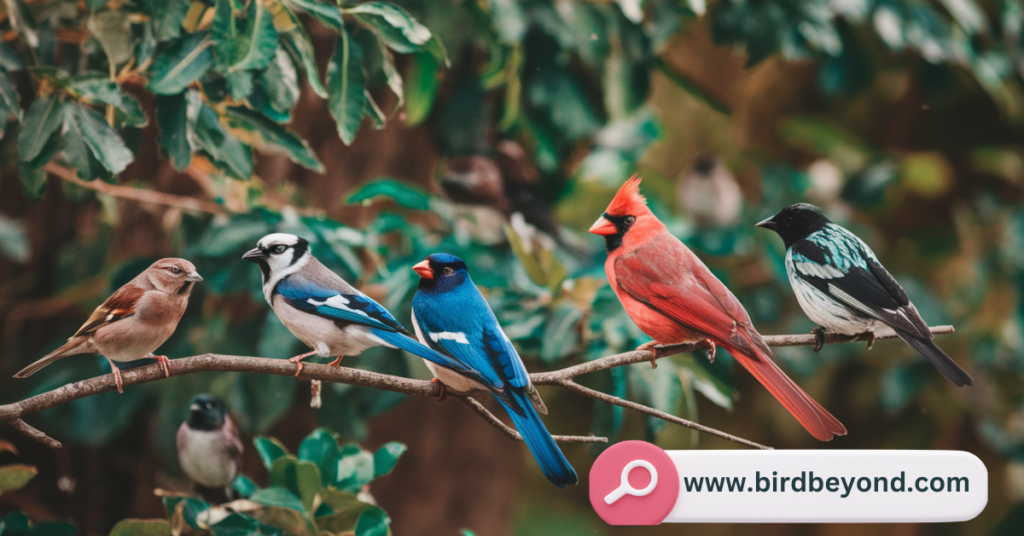
Even birds with short names face long-term challenges. Let’s look at some conservation issues and success stories.
Endangered Species with Four-Letter Names
- Kagu: A flightless bird from New Caledonia
- Threatened by introduced predators and habitat loss
- Only about 250-1000 individuals remain in the wild
- Nene: Hawaii’s state bird, once on the brink of extinction
- Population dropped to just 30 birds in the 1950s
- Conservation efforts have increased numbers to over 2,500
- Iiwi: A Hawaiian honeycreeper threatened by habitat loss and disease
- Climate change is pushing mosquitoes (which carry avian malaria) into their highland habitats
- Projected to lose 90% of their range by 2100 without intervention
These species highlight the diverse threats facing birds worldwide, from invasive species to climate change. Their stories underscore the importance of targeted conservation efforts.
Success Stories: Four-Letter Birds Making a Comeback
- Bald Eagle: Once endangered, now thriving in North America
- DDT ban and habitat protection led to remarkable recovery
- Removed from endangered species list in 2007
- Kiwi: Conservation efforts have stabilized some species’ populations
- Intensive predator control and captive breeding programs have helped
- North Island Brown Kiwi population now increasing by 2% annually
- Rhea: Sustainable ranching practices are helping rhea populations recover
- Collaboration between conservationists and ranchers in Argentina
- Population of Darwin’s Rhea has stabilized in some areas
These success stories demonstrate that with concerted effort and appropriate strategies, endangered bird populations can recover. They offer hope for other threatened species and ecosystems.
How Readers Can Help Protect These Birds
- Support conservation organizations
- Donate to or volunteer with groups like the Audubon Society, BirdLife International, or local bird conservation organizations
- Participate in fundraising events or awareness campaigns
- Participate in citizen science projects like eBird
- Report bird sightings to contribute to scientific understanding of bird populations and migrations
- Join annual bird counts like the Christmas Bird Count or Great Backyard Bird Count
- Make your backyard bird-friendly
- Plant native species that provide food and shelter for local birds
- Provide water sources like birdbaths or small ponds
- Reduce or eliminate pesticide use to protect insect populations that birds rely on for food
- Advocate for bird-friendly policies
- Support legislation that protects bird habitats and migratory routes
- Encourage your local government to implement bird-safe building guidelines to reduce collisions
- Reduce your carbon footprint
- Many bird species are threatened by climate change
- Simple actions like reducing energy use and choosing sustainable transportation options can help
By taking these actions, individuals can contribute to the protection and conservation of bird species, including our beloved four-letter friends.
The Role of Four-Letter Birds in Ecosystems
Despite their short names, these birds play crucial roles in their respective ecosystems. Let’s explore some of these ecological contributions:
Seed Dispersal
Many four-letter birds, such as the dove and crow, are important seed dispersers. They eat fruits and berries, then spread the seeds through their droppings. This process is crucial for maintaining plant diversity and forest regeneration.
Pollination
Birds like the iiwi in Hawaii are important pollinators. As they feed on nectar, they transfer pollen between flowers, facilitating plant reproduction. Some plants have even evolved to have flowers specifically adapted to bird pollinators.
Pest Control
Insectivorous birds like the wren and some species of teal help control insect populations. This natural pest control is beneficial for both agriculture and forest health.
Ecosystem Engineers
Some birds, like the kiwi, act as ecosystem engineers. Their foraging behavior, which involves probing the soil with their long beaks, aerates the soil and can influence plant growth patterns.
Indicator Species
Certain birds serve as indicator species, their presence or absence providing clues about the health of an ecosystem. For example, the presence of loons often indicates clean, healthy lake ecosystems.
Four-Letter Birds in Scientific Research
These birds have contributed significantly to our understanding of various scientific concepts:
Navigation and Migration
Studies on birds like the tern have shed light on incredible feats of navigation. Arctic Terns, for instance, make the longest known animal migration, traveling from the Arctic to the Antarctic and back each year.
Cognitive Abilities
Research on birds like the crow and rook has revolutionized our understanding of animal intelligence. These birds have demonstrated tool use, problem-solving skills, and even the ability to plan for the future.
Evolutionary Adaptations
The study of birds like the kiwi and rhea provides insights into evolutionary processes. Their adaptations to flightlessness and specific environmental niches offer valuable data for evolutionary biologists.
Climate Change Impacts
Monitoring populations of birds like the puffin and gull helps scientists track the impacts of climate change on marine ecosystems. Changes in these birds’ breeding patterns or food availability can indicate broader ecological shifts.
The Future of Four-Letter Birds
As we look to the future, what challenges and opportunities await our feathered friends with brief names?
Climate Change Adaptation
Many four-letter birds will need to adapt to changing climates. Some, like the nene, may face challenges as their habitats shift. Others, like certain gull species, may expand their ranges into new areas.
Urban Adaptation
As human populations grow and urban areas expand, some birds are adapting to city life. Crows and certain gull species have become highly successful urban dwellers. Understanding how these birds adapt could help in urban conservation efforts.
Technological Advances in Conservation
New technologies are revolutionizing bird conservation. GPS tracking devices small enough for even tiny birds like wrens are providing unprecedented data on migration patterns. Drone technology and satellite imagery are helping researchers monitor hard-to-reach bird populations like the kiwi.
Genetic Research and De-extinction
Advances in genetic research could have profound implications for bird conservation. Some scientists are even exploring the possibility of “de-extinction” for recently extinct birds. While controversial, these technologies could potentially bring back lost species like the dodo.
Conclusion
These short monikers serve practical purposes for researchers and birdwatchers alike, while also capturing the imagination of nature lovers worldwide.
As we’ve seen, behind each of these snappy names lies a unique and often surprising creature. Whether it’s the tool-using rook or the fish-catching smew, these birds remind us of the incredible diversity of life on our planet.
The stories of these birds – their adaptations, their roles in ecosystems, their cultural significance, and the conservation challenges they face – reflect broader narratives about our changing world. They underscore the intricate connections between species and their environments, and between human activities and the natural world.
As we move forward, the fate of these four-letter birds will be closely tied to our own choices and actions. By learning about them, appreciating their value, and taking steps to protect them, we not only safeguard biodiversity but also enrich our own lives and cultures.
So next time you hear a chirp, caw, hoot, or tweet, take a moment to appreciate the feathered friend behind the sound. Who knows? It might just be a four-letter bird adding its voice to the grand symphony of nature.
What’s your favorite four-letter bird name? Share it in the comments below, and let’s keep the conversation flying!
Additional Resources
Also Read: SIX LETTER BIRD NAMES
For those eager to dive deeper into the world of birds, here are some helpful resources:
- Bird Identification Apps:
- Merlin Bird ID by Cornell Lab of Ornithology
- Audubon Bird Guide App
- iBird Pro Guide to Birds
- Best Birdwatching Spots to See Four-Letter Birds:
- Everglades National Park, Florida (for wading birds like ibis)
- Kenai Fjords National Park, Alaska (for seabirds like puffins)
- Kruger National Park, South Africa (for a variety of African species)
- Books and Field Guides for Further Reading:
- “The Sibley Guide to Birds” by David Allen Sibley
- “National Geographic Field Guide to the Birds of North America”
- “The Crossley ID Guide: Eastern Birds” by Richard Crossley
- Online Resources:
- Cornell Lab of Ornithology’s All About Birds website
- BirdLife International’s datazone for conservation status
- eBird for real-time bird sightings and data
Remember, the world of birds is vast and endlessly fascinating. Whether you’re a seasoned ornithologist or a casual backyard birdwatcher, there’s always something new to discover in the realm of our feathered friends!
Frequently Asked Questions
Why do some birds have four-letter names?
Four-letter bird names often arise from various sources. Some are onomatopoeic, mimicking the bird’s call (like “kiwi”). Others are shortened versions of longer names for convenience in birdwatching and research. In many cases, these names have simply evolved over time through common usage.
Are all four-letter bird names official?
Not all four-letter bird names are official scientific names. Many are common names used in everyday language or birdwatching circles. Official scientific names follow the binomial nomenclature system and are typically longer. However, some four-letter codes (alpha codes) are standardized for use in scientific studies and databases.
How many bird species have four-letter names?
While there’s no official count, dozens of bird species worldwide have common four-letter names. This includes well-known birds like hawk, dove, crow, and kiwi, as well as lesser-known species like smew, rhea, and iora.
Can four-letter bird names cause confusion?
Sometimes, yes. For instance, “hawk” can refer to many different species. Context is often necessary to determine the specific bird being discussed. In scientific contexts, more precise identifiers are used to avoid confusion.
Are four-letter bird names used in all languages?
Four-letter bird names are most common in English, but similar short names exist in many languages. However, the specific birds that have short names can vary between languages and cultures.
How do researchers use four-letter bird names?
Researchers often use standardized four-letter codes, known as alpha codes, for efficient data recording and analysis. For example, “AMRO” is used for American Robin. These codes are particularly useful in large-scale studies and citizen science projects.
Can I create my own four-letter bird name?
While you can create nicknames for birds you observe, official bird names are determined by ornithological authorities. New species are typically given scientific names following established conventions, and common names often evolve through usage over time.
Do four-letter bird names have any special significance in birdwatching?
Four-letter names are popular among birdwatchers for their convenience in quick note-taking during field observations. They’re easy to remember and write down, making them valuable for rapid species identification and recording.
Are there any extinct birds with four-letter names?
Yes, the most famous example is probably the dodo. While not strictly a four-letter name, it’s close and widely recognized. The huia, an extinct bird from New Zealand, is another example of a four-letter named bird that no longer exists.
How can I learn more about birds with four-letter names?
Field guides, ornithology websites, and birdwatching apps are great resources for learning about birds, including those with four-letter names. Participating in local birdwatching groups or citizen science projects can also provide hands-on experience and knowledge.

William Henry is a distinguished blogger with a flair for avian storytelling. With a wealth of experience, he delivers captivating insights and expert knowledge to Bird Beyond. William’s passion for birds and his engaging writing style make him a standout voice in the birdwatching community, offering readers both valuable information and delightful narratives.

